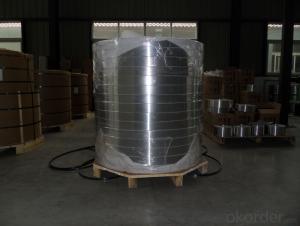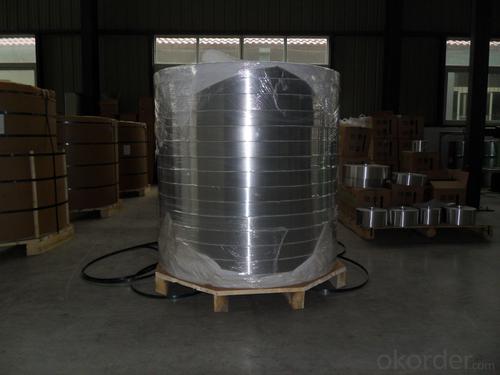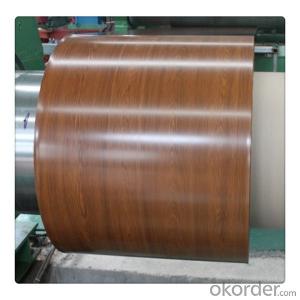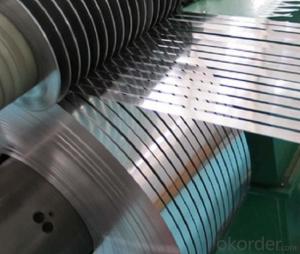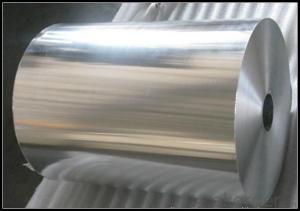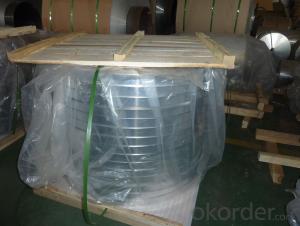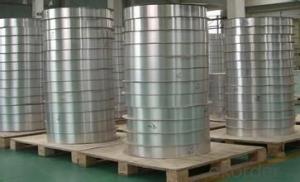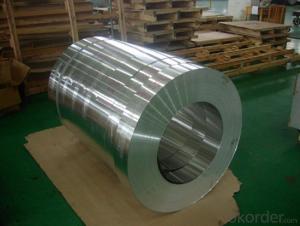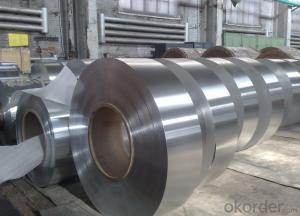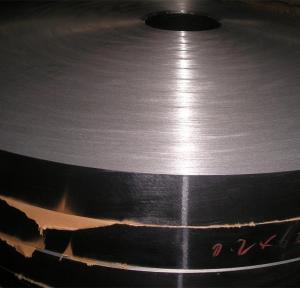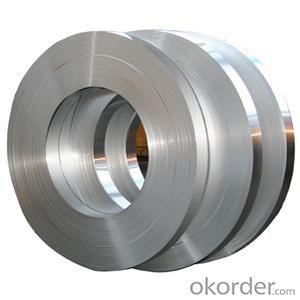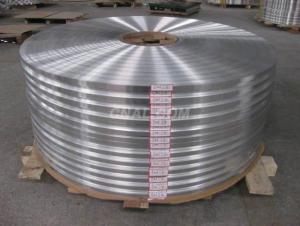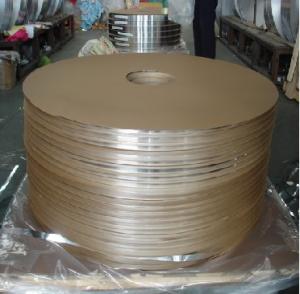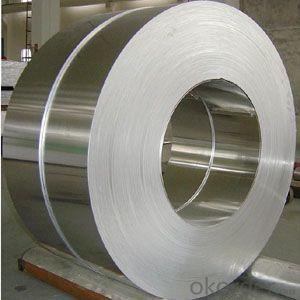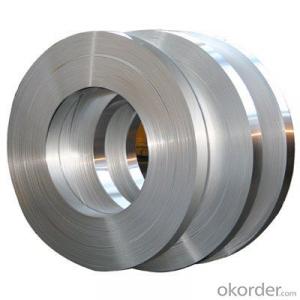Aluminum Metal Strips for HVAC / Air Condition
- Loading Port:
- Shanghai
- Payment Terms:
- TT or LC
- Min Order Qty:
- -
- Supply Capability:
- 2000Tons kg/month
OKorder Service Pledge
OKorder Financial Service
You Might Also Like
1.Description
Aluminum strip is widely used in industry, such as packaging & building industry. Because the good anti heat and anti wet specification. it's very good for HVAC system / Air Condition materials. Normally it's outside bright and inside is matt.
2.Specification and Application
Specification
| Alloy | 1100/1060/1100/8011 |
| Temper | Soft |
| Process | CC |
| Thickness | 0.09~0.5mm |
| Width | As required |
| Core ID | As required |
Property
| Tensile strength | ≥90Mpa |
| Elongation | ≥10% |
| Tolerance of size | As GB Standard |
3. Advantages
We've been specialized in aluminium for more than ten years, we know this product very well, and we have good finacial support from government. And also flexible payment term and fast delivery.
4. Pictures

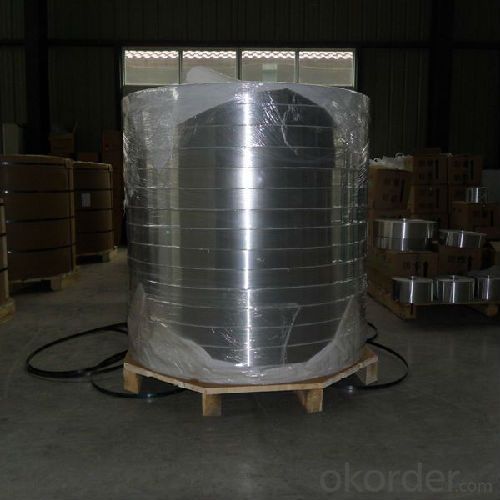
5. FAQ
1) What is your delivery time?
Our regular production time is over 30 days, It depends on the order quantity also.
2) What is your payment term?
We accept T/T, LC at sight, Usance LC 30, 60, 90, 120, 180 DAYS.
3) What is your price structure?
Our price is based on Shanghai Metal Price(SMM), not LME, but we could offer LME+ Conversion for your reference.
4) What is your minimum order quantity?
3tons per size.
- Q: What types of aluminum strips are known for their durability and longevity?
- <p>Yes, there are several types of aluminum strips known for their durability and longevity. These include 3003-H14, 5052-H32, and 6061-T6 aluminum alloys. 3003-H14 is known for its excellent corrosion resistance and formability, making it ideal for applications requiring high durability. 5052-H32 offers good strength, corrosion resistance, and weldability, suitable for marine and structural applications. 6061-T6 is valued for its high strength-to-weight ratio and is commonly used in aerospace and automotive industries where long-lasting performance is crucial. Proper surface treatments and coatings can further enhance the durability and longevity of aluminum strips.</p>
- Q: What types of aluminum strips are more appropriate for industrial purposes?
- <p>Yes, there are specific types of aluminum strips that are more suitable for industrial applications. These include 1100 series aluminum strips, known for their high purity and excellent corrosion resistance. 3003 series strips are also popular for their good formability and weldability, making them ideal for applications like chemical equipment and aircraft parts. Additionally, 5052 series strips are valued for their strength and resistance to marine environments, often used in shipbuilding and offshore structures. Each type is chosen based on the specific needs of the industrial application, such as strength, malleability, and environmental resistance.</p>
- Q: Is it possible to use aluminum strips as a material for indoor flooring or wall cladding?
- <p>Yes, aluminum strips can be used for both indoor flooring and wall cladding. They are lightweight, durable, and resistant to corrosion, making them suitable for various interior applications. Aluminum strips are also easy to install and maintain, and they can provide a modern, sleek look to any space. However, it's important to consider the specific requirements of your project, such as load-bearing capacity, thermal insulation, and aesthetic preferences, to ensure that aluminum strips are the right choice for your needs.</p>
- Q: What is the difference between cold rolling and hot rolling of aluminium plate and aluminium strip? Which kind of aluminum plate is good? Speak a little more popularly
- Not appearing in spots. Suitable for mirror surface, spray coating. Hot rolling is more expensive than cold rolling
- Q: This question seeks to understand the distinctions among various types of aluminum strips used in roofing and siding applications.
- <p>Aluminum strips for roofing and siding differ in terms of gauge, finish, profile, and coating. Gauge refers to the thickness, with lower numbers indicating thicker strips, offering greater durability. Finishes can be mill finish, anodized, or painted, with painted finishes offering color options and corrosion resistance. Profiles include standing seam, batten, and ribbed, each affecting aesthetics and water runoff. Coating thickness and type, such as Kynar 500 or Hylar 5000, impact weather resistance and lifespan. These factors determine the strip's suitability for specific climates, architectural styles, and budget considerations.</p>
- Q: How does the excavator aluminum belt turn in place?
- Because of the difficult turning of the track, the excavator's track turn in situ makes the excavator turn.
- Q: Is it possible to utilize aluminum strips in the construction of car covers or covers for other types of vehicles?
- <p>Aluminum strips can be used for car covers or covers for other vehicles, but their application is limited. Aluminum is lightweight and corrosion-resistant, which are desirable properties for vehicle covers. However, it lacks the flexibility and durability of materials like fabric or vinyl, making it less suitable for covering vehicles. Aluminum strips might be used as a reinforcement in the edges or corners of a cover, but they are not typically the primary material for the cover itself. It's important to consider the specific needs and conditions that the cover will be subjected to when choosing materials.</p>
- Q: What are the various forms in which aluminum strips can be manufactured?
- <p>Aluminum strips come in a variety of shapes and sizes to suit different applications. Common shapes include rectangular strips, square strips, and round strips. Rectangular strips are the most common and are used in construction, automotive, and packaging. Square strips are often used in electrical applications and for decorative purposes. Round strips are less common but are used in specific industries such as aerospace and medical equipment. Additionally, aluminum strips can be flat, embossed, or have other surface treatments depending on the requirements of the application.</p>
- Q: This question asks if there are different types of aluminum with varying levels of electrical conductivity.
- <p>Aluminum, as a pure element, has a consistent electrical conductivity. However, its conductivity can be affected by the presence of impurities or alloying elements. In general, the higher the purity, the better the conductivity. Alloys like 1100 aluminum (99.00% pure) have the highest conductivity among aluminum alloys. Adding elements like copper, magnesium, or silicon to aluminum can increase its strength but will decrease its conductivity. Therefore, while there isn't a 'better' type of aluminum in terms of conductivity, there are alloys with varying levels of conductivity based on their composition and purity.</p>
- Q: This question asks whether aluminum strips can be utilized for both indoor and outdoor purposes or just one of them.
- <p>Aluminum strips can be used for both interior and exterior applications. They are known for their durability, corrosion resistance, and versatility, making them suitable for a wide range of uses. In interior applications, aluminum strips are often used for decoration, framing, and structural support. For exterior applications, they are used in construction, automotive, and signage due to their strength and resistance to weathering. Proper surface treatment and coating can further enhance their suitability for outdoor use.</p>
Send your message to us
Aluminum Metal Strips for HVAC / Air Condition
- Loading Port:
- Shanghai
- Payment Terms:
- TT or LC
- Min Order Qty:
- -
- Supply Capability:
- 2000Tons kg/month
OKorder Service Pledge
OKorder Financial Service
Similar products
Hot products
Hot Searches
Related keywords
